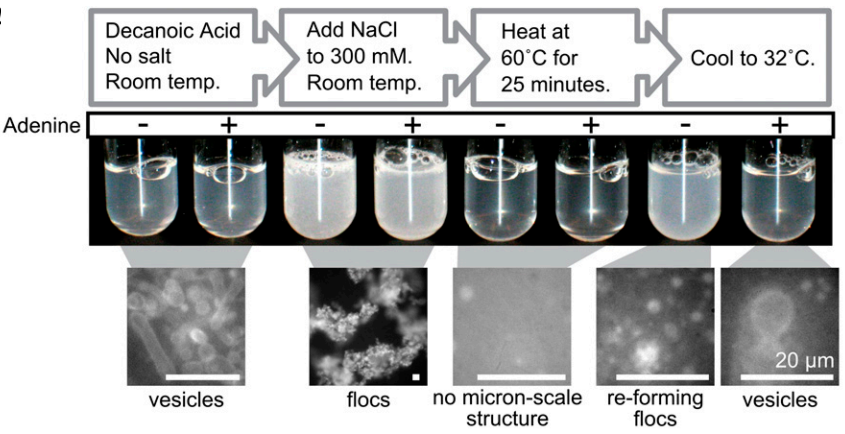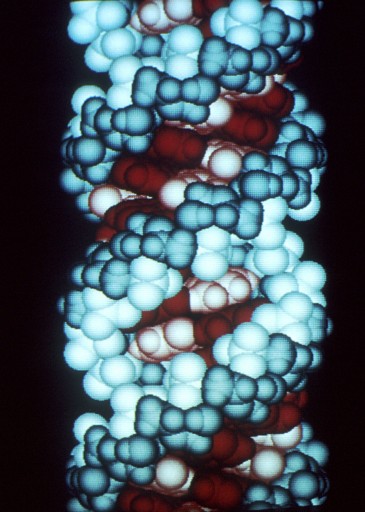How chemical components protected each other to create RNA
July 31, 2013
The chemical components crucial to the start of life on Earth may have primed and protected each other in never-before-realized ways, according to new research led by University of Washington scientists.
It could mean a simpler scenario for how that first spark of life came about on the planet, according to Sarah Keller, UW professor of chemistry, and Roy Black, UW affiliate professor of bioengineering, co-authors of a paper published online July 29 in the Proceedings of the National Academy of Sciences.
Scientists have long thought that life started when the right combination of bases and sugars produced self-replicating ribonucleic acid, or RNA, inside a rudimentary “cell” composed of fatty acids. Under the right conditions, fatty acids naturally form into bag-like structures similar to today’s cell membranes.
In testing one of the fatty acids representative of those found before life began — decanoic acid — the scientists discovered that the four bases in RNA bound more readily to the decanoic acid than did the other seven bases tested.
By concentrating more of the bases and sugar that are the building blocks of RNA, the system would have been primed for the next steps, reactions that led to RNA inside a vesicle (bag).
“The bag is the easy part. Making RNA from scratch is very hard,” Keller said. “If the parts that come together to make RNA happen to preferentially stick to the surfaces of bags, then everything gets easier.”
Protecting vesicles from effects of salty seawater
The scientists also discovered a second, mutually reinforcing mechanism: The same bases of RNA that preferentially stuck to the fatty acid also protected the bags from disruptive effects of salty seawater. Salt causes the fatty acid bags to clump together instead of remaining as individual “cells.”

Nucleobase adenine reduces reflocculation (clumping) of decanoic acid induced by salt, and enables vesicle formation after dissolution of flocs (clumps) by heat (credit: Roy A. Black et al./PNAS)
The researchers found that several sugars also give protective benefit but the sugar from RNA, ribose, is more effective than glucose or even xylose, a sugar remarkably similar to ribose, except its components are arranged differently.
The ability of the building blocks of RNA to stabilize the fatty acid bags simplifies one part of the puzzle of how life started, Keller said.
“Taken together, these findings yield mutually reinforcing mechanisms of adsorption, concentration and stabilization that could have driven the emergence of primitive cells,” she said.
Researchers from Augsburg College in Minneapolis, the University of Minnesota, and the University of California, Santa Cruz where also involved.
